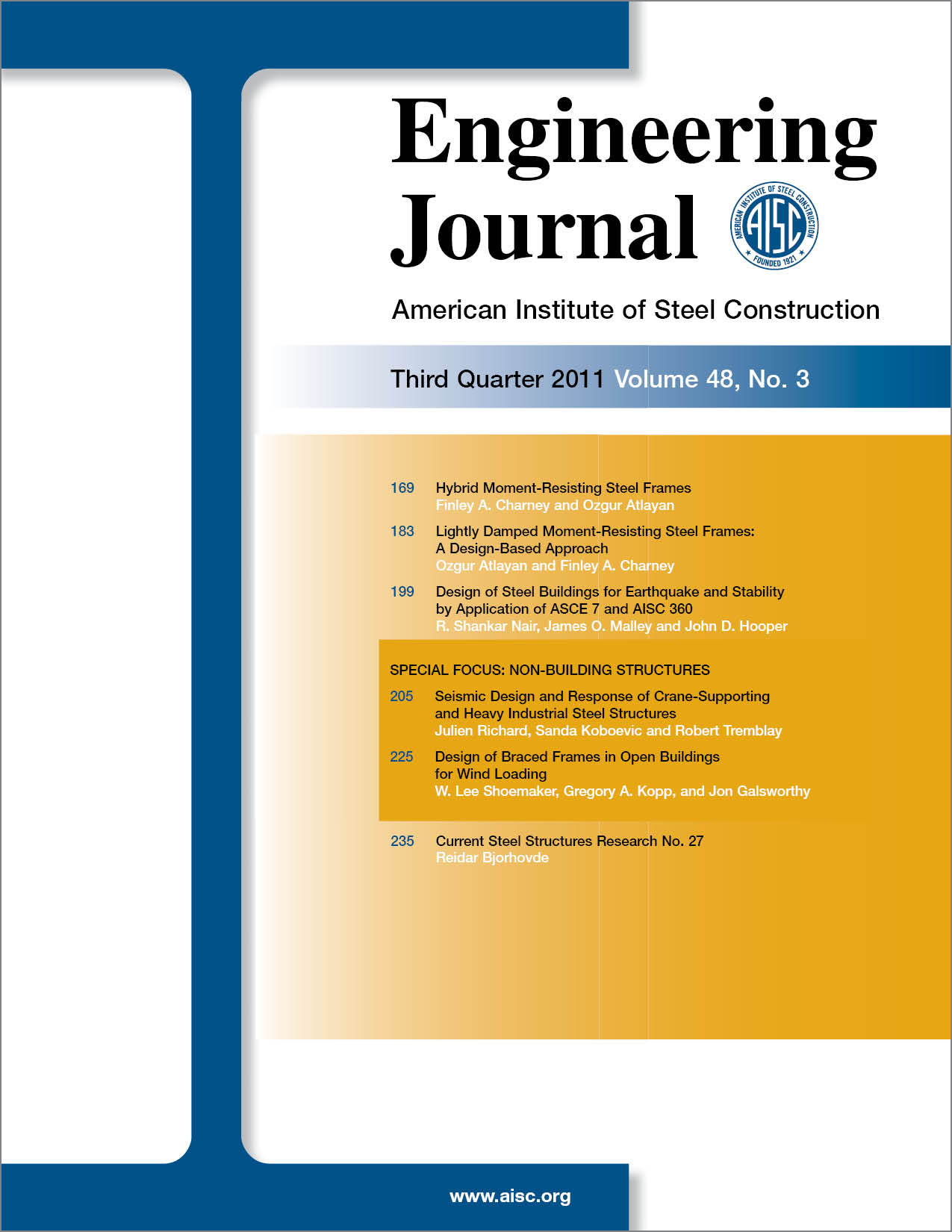Design of Steel Buildings for Earthquake and Stability by Application of ASCE 7 and AISC 360
DOI:
https://doi.org/10.62913/engj.v48i3.1014Keywords:
design loads, seismic design, structural stabilityAbstract
Design of steel buildings in the United States typically combines application of ASCE/SEI 7, Minimum Design Loads for Buildings and Other Structures, and ANSI/AISC 360, Specification for Structural Steel Buildings. For buildings designed for seismic effects, ANSI/AISC 341, Seismic Provisions for Structural Steel Buildings, may also be applicable. The ASCE 7 Minimum Design Loads standard includes specific design provisions related to stability under seismic loading which overlap and, in some instances, appear to conflict with the stability design requirements of the AISC Specification. This paper explores the areas of overlap and apparent conflict between ASCE 7 and AISC 360 and offers practical recommendations for seismic design incorporating the provisions of both.

